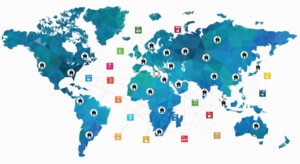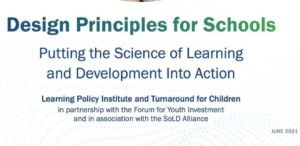14 Developments to Watch for in 2014

It’s been a big year for innovations in learning. If 2012 was the year of the MOOC, 2013 was the year blended learning went mainstream–even schools that were just layering tabs on top of an obsolete model called it “blended.” The following are 14 developments to watch for in 2014.
1. Expectations. Schools will continue coming to terms with different and higher expectations to be college and career ready. In addition to new English and math standards, many districts and networks will update their goals for Deeper Learning outcomes and will consider learning experiences that build academic mindset.
2. Assessments. There will be an odd assortment of old and new assessments in many districts in 2014 as states come to terms with new expectations. PARCC and Smarter Balanced are facing capable competition from vendors that can deliver cheaper tests.
Rapid adoption of adaptive instructional systems (e.g., i-Ready, Dreambox, Compass/NWEA, Reasoning Mind) will continue–combining frequent Common Core aligned assessment with targeted tutoring.
3. Funding. The stock market is at record highs and real estate is back to 2008 levels but, “We’re not looking at any tide of rising revenues in the near future,” said Rhode Island Commissioner Deborah Gist–and that will be the case in many states.
Like Ohio’s Straight A Fund, we may see a couple more states make one time investments in innovation and sustainability. New standards, interest in personalization, and tight budgets will continue to drive interest in new school models and staffing patterns. For more, download our free ebook, Navigating the Shift to Digital Learning.
4. OER. Tight budgets and the shift to digital learning will continue to drive interest in open education resources (OER). Philanthropic investments continue to drive innovation at CK12, Khan Academy,PowerMyLearning, Gooru. In 2014 more high schools will incorporate MOOCs, open courses and modules (e.g., Saylor.org, Canvas.net)
5. Tabs. IDC reports that about 221 million tabs were sold in 2013, up 54% from last year. Tabs are displacing PCs in the roughly $5 billion school device category. Apple is selling more than 1 million tablets a quarter to schools. Like Anne Wujcik, “It’s not that I’m anti-tablet. It’s more a matter of being pro-planning.” Check out the Blended Learning Implementation Guide and plan before you buy those tablets.
6. BYOD. Mobile penetration became so ubiquitous that the bring-your-own-device wave will become the norm in 2014. Some schools serving affluent families will use BYOD as a primary access device strategy, most public schools will use it to supplement purchased equipment to ensure equitable access.
7. Online. I’m guessing that online learning is still growing by about 50% annually…but data collection is so bad it’s really hard to tell. About 3 million American students took at least one online class last school year, it will probably be 5 million during the 2013-14 school year. Most districts report that they are offering or planning to offer online courses. (Watch for a January paper outlining options.) A handful of states will emulate Louisiana Course Choice and expand statewide part time options.
8. Branding. I think Matthew Lynch is right , we’ll see more school and programs responding to the increased array of options by paying more attention to branding, marketing, and social media.
9. Blends. Grant programs like Next Generation Learning Challenges are promoting more innovative blended learning models. In 2012, there were a few dozen interesting blends, in 2013 there were a few hundred, in 2014 there will be thousands of schools with productive and interesting blends.
10. Platforms. Learning platforms will slowly get better in 2014 with LMS adding social features and the ability to host open and teacher developed content. Schools will continue to ditch their servers and adopt cloud based platforms. While still 5 years behind where they should be, platform progress is being made on 10 vectors.
11. Profiles. Now, in the zone of wishful thinking…I think we’ll finally see some progress on learner profiles in 2014. We wrote a paper about profiles a year ago. Profiles are also on Scott Benson’s list of 4 Essential Attributes of Personalized Learning.
I’m hoping for more gradebook improvements in 2014–apps that look like Jump Rope, Kickboard, and MasteryConnect’s mastery tracker and compile data from a variety of sources in ways that make it easy to manage a competency-based environment. (Watch for our January report on performance assessment and mastery tracking.)
12. Playlists. A term I first heard applied to learning at School of One in 2009. The idea of customized playlists of learning experiences is now widely discussed but only occasionally executed at a few schools including Summit Denali using the open ActivateInstruction platform. A handful of nonprofit OER sites have pretty good grade level playlists but real customized playlists will come with better profiles…maybe in 2014.
Personalized playlists are not just for students; more educators will benefit from individual learning plans and a sequence of tailored digital resources on platforms like Bloomboard.
13. Efficacy. Lean startup strategies have finally come to education. We’ll see progress on short cycle trials of tools and strategies in 2014 (detailed examples on Wednesday). Pearson rolled out anefficacy framework last month that will spur more outcome-oriented development.
14. Growth measures. Also in the zone of wishful thinking is the most important least appreciated development we could see in 2014–better growth measures for individual students. You’re thinking, “Our state adopted growth measures.” Those are cohort estimates based on inadequate year end tests. With the shift to digital, kids are cranking out 10,000 keystrokes a day yielding tons of background assessment data that could relatively easily (i.e., easier than going to Mars) be combined with teacher observations for dynamic growth rates for individual students making it easier to compare the progress of 10 year olds in many different learning pathways. Better growth measures is an iNACOL policy priority.
Not in ’14. You won’t see a reauthorization of federal education policy–an ongoing act of criminal neglect by an deadlocked congress. Our kids deserve better.
Curriculum Associates, Dreambox, CompassLearning are Getting Smart Advocacy Partners. Bloomboard and MasteryConnect are portfolio companies of Learn Capital where Tom is a partner.








Adam Blum
Interesting list. First generation OERs seem quite stalled overall: n users, resource count, standards alignment and hooks to other tools. We think its time for a "next generation OER": http://openedio.tumblr.com/post/68679196416/what-does-it-mean-to-be-truly-open-the-next